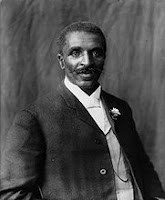
Birth: 15 October 1931, at Dhanushkodi in the Rameswaram, Tamil Nadu.
Mothers Name: Ashiamma
Fathers Name: Jainulabiddin
Dr. A.P.J. Abdul Kalam sir was born on 15th october 1931 at Dhanushkodi in the Rameswaram, Tamil Nadu. His full name was "Avul PakirJainulabdeen Abdul Kalam". He is from a middle-class family. His father Jainulabiddin, had to rent the boats to the fishermen. His mother Ashiamma had gained much formal education. His father having quality to innate wisdom, true generosity of spirit and was a spiritual person. His father
commanded a high respect religious man. Dr. Kalam distributed newspapers at a young age to help with household expenses.
Dr.Kalam's primary education was completed in Ramaeswaran. And then he went to Schwartz High School at Ramanathpuram from where he went to Tiruchchirapalli for higher studies. Dr.Kalam was the first graduate from his family. He wrote "By the time I completed my education at Schwartz, I was a self-confident boy with the determination to be successful. The decision to go in for further education was taken without a second thought. To us, in those days, the awarness of the possibilities for a professional education did not exist; higher education simply meant going to college." After completing his B.Sc from St. joseph's college, he joined the MIT (Madras Institute of Technology) for studing Aeronautical engineering. Then he went to HAL (Hindustan Aeronautics Limited) at Bangalore as a trainee.
In 1963-64 he was invited by NASA to spend four months in the US at the Wallops Island Rocketry Centre and the Langley Research Centre. Before he become president of the country, he had divided his career in four phases.
The FIRST phase :
He worked with the Indian Space Research Organization(ISRO). After initiating Fibre Reinforced Plastics activities and spending time with the aerodynamics and design group he joined the satellite launching vehicle team at Thumba. Here he was made the Project Director of the Mission for SLV-3. He played an important role in developing satellite launch vehicle technology and expertise in control, propulsion and aerodynamics. The SLV-3 project managed to put Rohini, a scientific satellite, into orbit in July 1980. Commenting on the first phase of his career Dr. Kalam wrote: “This was my first stage, in which I learnt leadership from three great teachers—Dr. Vikram Sarabhai, Prof. Satish Dhawan and Dr. Brahm Prakash. This was the time of learning and acquisition of knowledge for me.”
The SECOND phase:
When he joined the Defence Research and Developement Organazation (DRDO). As a director, he was entrusted with the Integrated Guided Missile Development Program. Under his leadership India has able to develop strategic missiles. such as Nag, Prithvi, Akash, Trishul, and Agni. About this phase Dr. Kalam wrote:“During this stage, I have gone through many successes and failures. I learnt from failures and hardened myself with courage to face them. This was my second stage, which taught me the crucial lesson of managing failures.”
The THIRD phase:
Dr. Kalam has participation with India's mission to become a nuclear weapon state, joinly undertaken by DRDA and DAE (Department of Atomic Energy). Dr. Kalam as a chairman of the TIFAC, also got involved in the creation of Technology Vision 2020 and the India Millennium Missions (IMM 2020). In Nov 1999 Dr. Kalam was appointed as a principal Scientific Adviser to the Government of India.
The FOURTH phase:
Fourth phase was started when he left the post principal scientific Adviser. Then he joined the Anna University of Chennai as a Professor of technology and Societal Transformation. As part of realizing his mission he decided to ignite the minds of young. For this he wanted to meet atleast 100,000 students in differents parts of the country. Then he became the President of India in 2002.
In 1997 Dr. Kalam was awarded by the highest civilian award of India, the Bharat Ratna. The Government of India has honoured him with the Padma Bhushan(1981), Padma Vibhushan (1990). Also got Dr. Biren Roy Space award, om Prakash Basin Award for Science and Technology, National Nehru award, Arya Bhatta Award.
His favourite quotation:
"We must think and act like a nation of a billion
people and not like that of a million people.
Dream, dream, dream!! Conduct these dreams
into thoughts, and then transform them into action."
Dr. Kalam was the third Precident of the India to have been honoured with a Bharat Ratna before being elected to the highest office . He was the first scientist and the first bachelor who lived in the Rashtrapati Bhavan.
After his workperiod as the Precident he is now a visiting guest professor at JSS University, Mysore. He has agreed to deliver a minimum of four lectures every year..


